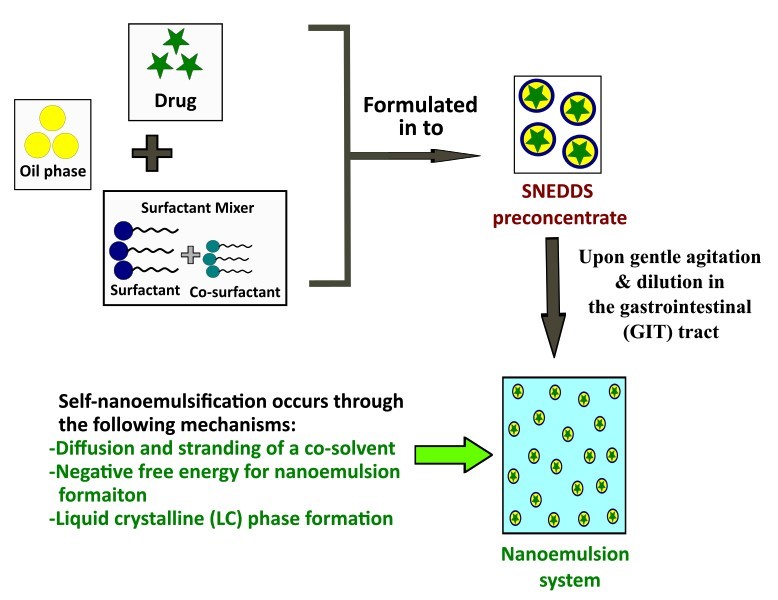
Terminology and Mechanisms of Self-Emulsifying Systems for Biomedical Applications: A Comprehensive Review
Manish Kumar, C.P. Jain, Ajay Kumar Shukla, Garima Verma, and Vimal Kumar Yadav
Том 85 №6
615 просмотров;
Self-emulsifying systems, such as self-emulsifying drug delivery systems (SEDDS) and self-nanoemulsifying drug delivery systems (SNEDDS), particularly used for enhancing the bioavailability of hydrophobic drugs. This review comprehensively examines the terminologies and mechanisms involved in self-emulsifying systems. The complex nature of self-emulsification is elucidated, encompassing diffusion, interfacial phenomena, and thermodynamic considerations. Three main mechanisms are explored in this review: diffusion and stranding, negative free energy for nanoemulsion formation, and the liquid crystalline (LC) phases formation at the interface. Diffusion and stranding cause rapid diffusion of water-miscible components, forming fine emulsion droplets. However, it lacks a clear thermodynamic explanation. Concept of negative free energy provides a thermodynamic explanation, while the formation of LC phases at the interface is an intermediary event during diffusion-driven self-emulsification. Understanding these mechanisms is crucial for developing optimum self-emulsifying formulation for pharmaceutical delivery, food bioactive delivery, and cosmetic applications.